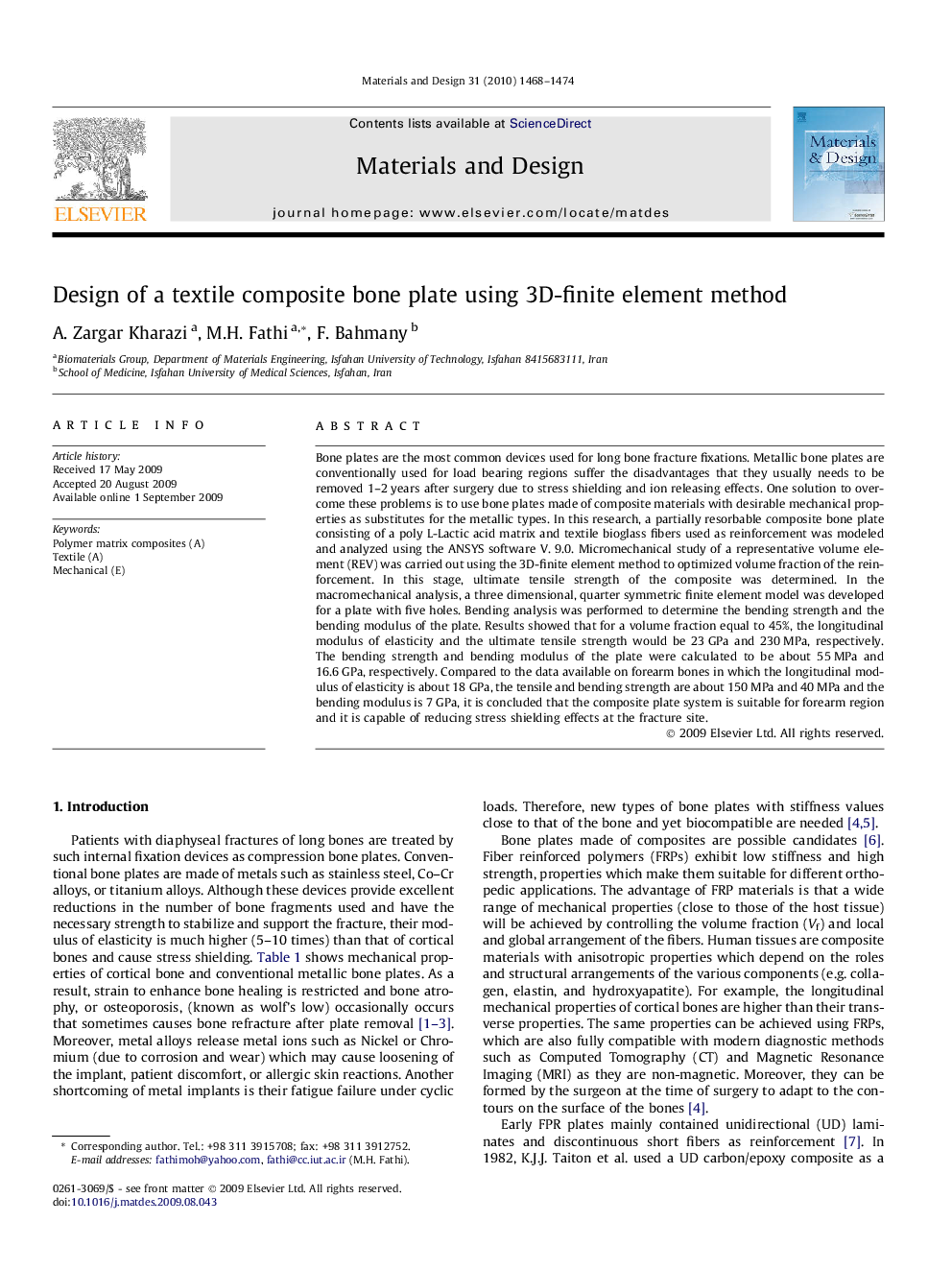| Article ID | Journal | Published Year | Pages | File Type |
|---|---|---|---|---|
| 832517 | Materials & Design (1980-2015) | 2010 | 7 Pages |
Bone plates are the most common devices used for long bone fracture fixations. Metallic bone plates are conventionally used for load bearing regions suffer the disadvantages that they usually needs to be removed 1–2 years after surgery due to stress shielding and ion releasing effects. One solution to overcome these problems is to use bone plates made of composite materials with desirable mechanical properties as substitutes for the metallic types. In this research, a partially resorbable composite bone plate consisting of a poly L-Lactic acid matrix and textile bioglass fibers used as reinforcement was modeled and analyzed using the ANSYS software V. 9.0. Micromechanical study of a representative volume element (REV) was carried out using the 3D-finite element method to optimized volume fraction of the reinforcement. In this stage, ultimate tensile strength of the composite was determined. In the macromechanical analysis, a three dimensional, quarter symmetric finite element model was developed for a plate with five holes. Bending analysis was performed to determine the bending strength and the bending modulus of the plate. Results showed that for a volume fraction equal to 45%, the longitudinal modulus of elasticity and the ultimate tensile strength would be 23 GPa and 230 MPa, respectively. The bending strength and bending modulus of the plate were calculated to be about 55 MPa and 16.6 GPa, respectively. Compared to the data available on forearm bones in which the longitudinal modulus of elasticity is about 18 GPa, the tensile and bending strength are about 150 MPa and 40 MPa and the bending modulus is 7 GPa, it is concluded that the composite plate system is suitable for forearm region and it is capable of reducing stress shielding effects at the fracture site.
